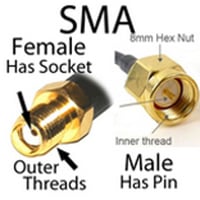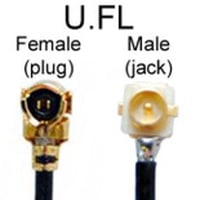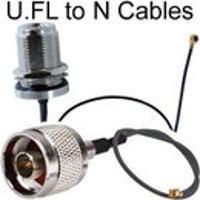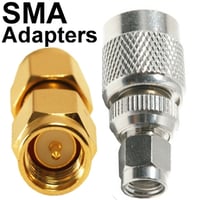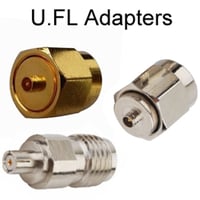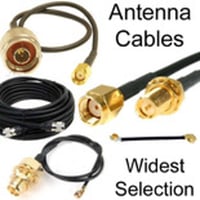RP SMA to U.FL
U.FL to RP-SMA connector:
Our U.FL To RP-SMA cables' consistently low broadband VSWR, range of frequency band compatibility (from 0GHz to 11 GHz) and 50 Ohms impedance matching, makes them suitable for all the following applications:
- All WiFi standards: 2.4GHz or 5GHz applications: Wi-Fi 6, WiFi 6E, 802.11AX, 802.11AC, 802.11N, 802.11G, 802.11B, 802.11A
- Cellular Wireless: LTE / 4G, LTEm, GSM / 3G, 5G, WiMax
- IOT (Internet of Things) wireless protocols: Bluetooth, ZigBee, LoRa, M2M, RFID, NB-IoT.
The three types of coax that we use for U.FL cables are all impedance match to 50 Ohms:
Most of Data Alliance's U.FL to RP-SMA cables are made with 1.13mm coax (especially for shorter lengths): 1.13mm coax is a very thin and flexible cable, with a black jacket. While 1.13 coax is not the low-loss option, it is often very important to use this very thin and flexible coax for two reasons:
- In tight spaces (inside of cases and enclosures), such a thin coax is necessary to make tight bends. Often the size of the enclosure or case port is so small that it requires the use of 1.13 coax.
- The U.FL connector will snap down on the jack without popping off: 1.13mm coax is often required for this reason, because U.FL connectors on RG174 do have a tendency to pop off the jack, if not glued on.
1.32mm coaxial cable is just slightly thicker than 1.13: The added thickness is a second layer of braided shielding, for lower signal loss (attenuation). Therefore 1.32mm is an excellent option when very small diameter, extreme flexibility and low-loss are all needed. If you want us to make your cables with 1.32mm coax, please contact Customer Service and we will make the cables as a special order.
We can make special orders of U.FL cables with 1.32mm coax or RG174 (both of which are lower signal loss options) or 1.13mm cable, for better flexibility. 1.32mm is very thin and flexible, like 1.13 coax.
All three of these coaxial cable types have a central wire (insulated by plastic) to conduct the RF signal, further surrounded by a braided mesh, shielding the conducting wire from electromagnetic interference. The double-shielded 1.32mm also includes a second , outer insulating layer that covers the conducting shield. The double-shielded design provides extremely efficient data transmission and where appropriately connected to an antenna the RF signal can be transmitted with minimal signal loss.
We use RG174 coax (2.54mm diameter) for longer lengths. RG174 has the lowest attenuation (signal loss) of the three coax types that are suitable for use with U.FL connectors.
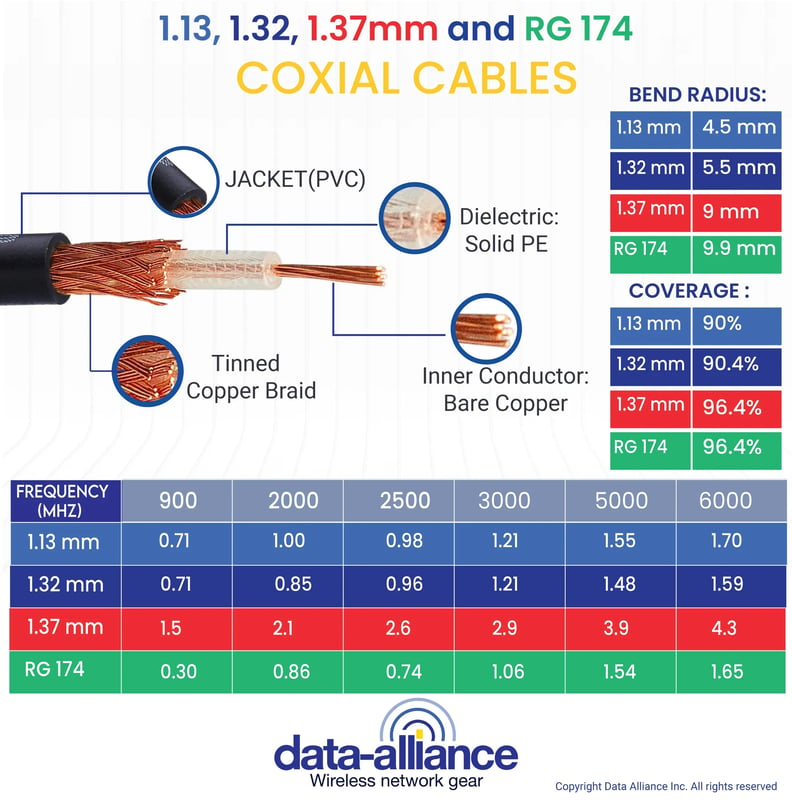
We also offer adapters from U.FL to RP-SMA male and female: There is less signal loss when using an adapter than a cable.
RP-SMA connectors: A threaded,medium-sized, threaded and round screw type connector made for use from 0GHz (DC) up to 11GHz. Since it has very low broadband Voltage Standing Wave Ratio (VSWR), it has become one of the most common connectors that has found usage in all manner of applications.
We offer U.FL cables to RP-SMA female and RP-SMA male, with these features and options:
- RP-SMA female connectors have a bulkhead nut and washer, so that you can mount this connector in a port of a case or enclosure. For outdoor applications, you can add a rubber o-ring on the outside of the enclosure port to waterproof / weatherproof the connector to IP68 rating.
- The RP-SMA female connector can be either straight or right-angled.
- The RP-SMA male connector can be straight or right-angled.
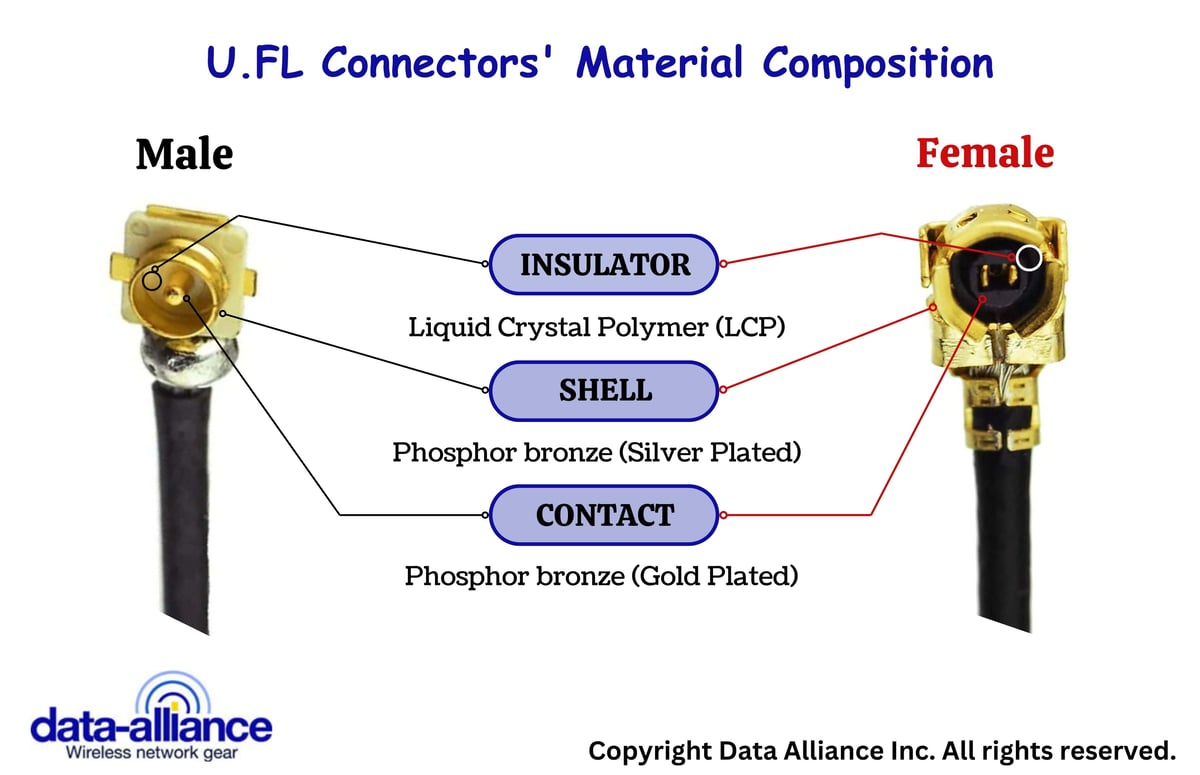
U.FL connectors: Ultra Miniature Coax Connector (UMCC) is another name for the U.FL connector. The U.FL connector series are typically attached to the U.FL connector/jack on internal-PCI wireless cards and Printed Circuit Boards (PCB). Given their miniature size, they have found use in the IoT (Internet of Things) applications including BlueTooth beacons.
The female U.FL connector mates with the U.FL-LP-66 jack that is popular with Bluetooth beacons, mini-PCI wireless cards, and ZigBee radios such as XBee.

